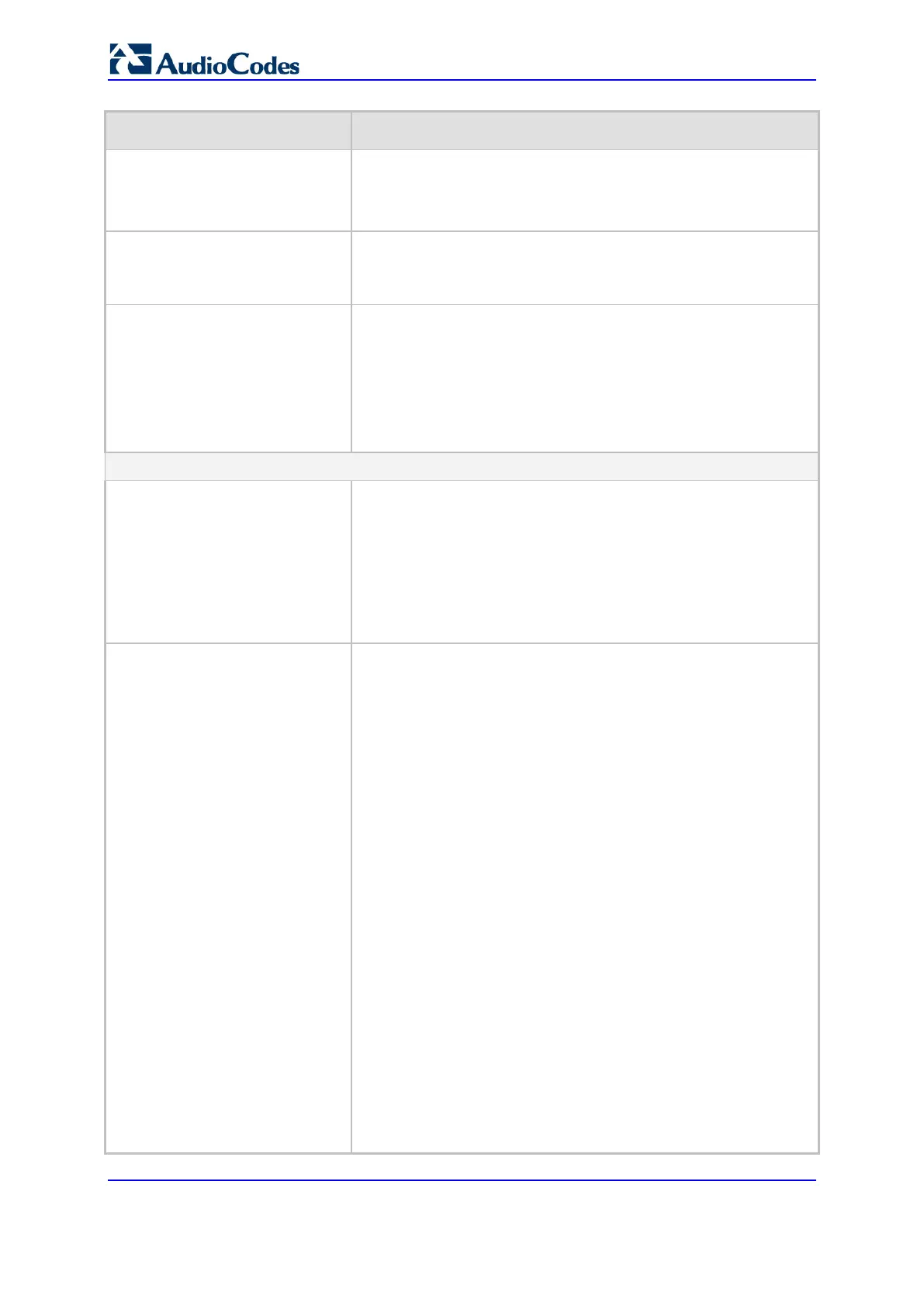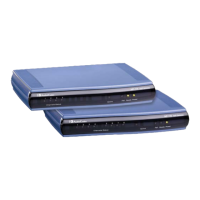User's Manual 482 Document #: LTRT-27045
Mediant 1000B Gateway & E-SBC
Parameter Description
IP Profile
ip-profile-id
[PREFIX_ProfileName]
Assigns an IP Profile to the routing rule in the outgoing direction.
The IP Profile allows you to assign various configuration attributes
(e.g., voice coder) per routing rule. To configure IP Profiles, see
''Configuring IP Profiles'' on page
393.
Destination Port
dst-port
[PREFIX_DestPort]
Defines the destination port to where you want to route the call.
Transport Type
transport-type
[PREFIX_TransportType]
Defines the transport layer type used for routing the call:
[-1] = (Default) Not configured and the transport type is
according to the settings of the global parameter,
SIPTransportType.
[0] UDP
[1] TCP
TLS
Advanced
Call Setup Rules Set ID
call-setup-rules-set-id
[PREFIX_CallSetupRulesSetId]
Assigns a Call Setup Rule Set ID to the routing rule. The device
performs the Call Setup rules of this Set ID if the incoming call
matches the characteristics of the routing rule. The device routes
the call to the destination according to the routing rule's
configured action only after it has performed the Call Setup rules.
By default, no value is defined.
To configure Call Setup rules, see ''Configuring Call Setup Rules''
on page 377.
Forking Group
forking-group
[PREFIX_ForkingGroup]
Defines a Forking G
roup number for the routing rule. This enables
forking of incoming Tel calls to multiple IP destinations. The
device sends simultaneous INVITE messages and handles
multiple SIP dialogs until one of the calls is answered. When one
of the calls is answered, the other calls are dropped.
Each Forking Group can contain up to 10 members. In other
words, up to 10 routing rules can be configured with the same
Forking Group number.
By default, no value is defined.
If all matched routing rules belong to the same Forking Group
number, the device sends an INVITE to all the destinations
belonging to this group. If matched routing rules belong to
different Forking Groups, the device sends the call to the Forking
Group of the first matched routing rule. If the call cannot be
established with any of the destinations associated with the
Forking Group and alternative routing is enabled, the device forks
the call to the Forking Group of the next matched routing rules, as
long as the Forking Group is defined with a higher number than
the previous Forking Group. For example:
Table index entries 1 and 2 are defined with Forking Group
"1", and index entries 3 and 4 with Forking Group "2": The
device first sends the call according to index entries 1 and 2,
and if unavailable and al
ternative routing is enabled, sends the
call according to index entries 3 and 4.
Table index entry 1 is defined with Forking Group "2", and
index entries 2, 3, and 4 with Forking Group "1": The device
sends the call according to index entry 1 only and ignores the

